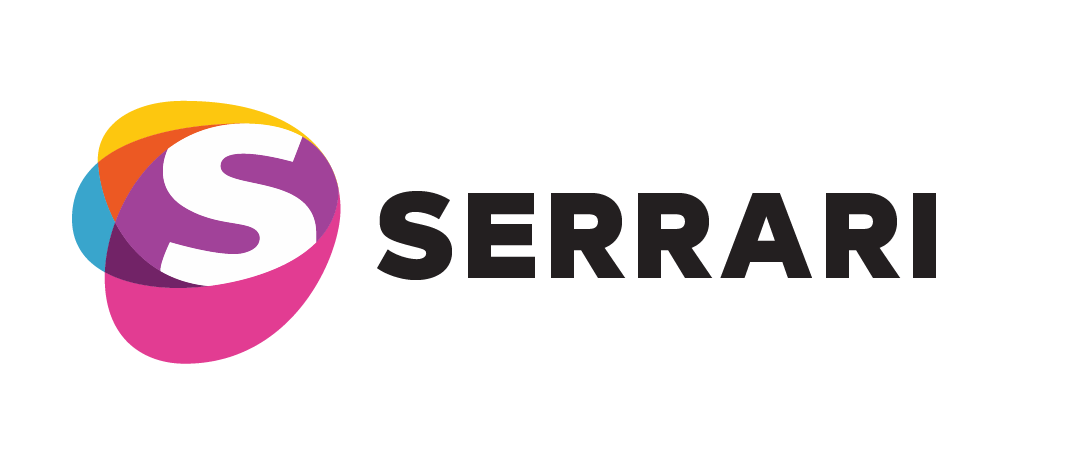In the world of business, understanding cash flows is crucial for making informed investment decisions. Cash flow represents the movement of money into and out of a business, and it serves as a key indicator of a company’s financial health. Free cash flow, in particular, is an essential metric that provides insights into a company’s ability to generate surplus cash after covering its operating expenses and capital expenditures. This article aims to provide a comprehensive guide to understanding business free cash flows in investment portfolios, with a specific focus on small and medium-sized businesses (SMBs).
1. What is Free Cash Flow?
Free cash flow (FCF) is the amount of cash generated by a business that is available for distribution to investors, reinvestment in the company, or debt reduction. It is calculated by subtracting capital expenditures (CAPEX) from operating cash flow (OCF). OCF represents the cash generated from a company’s core operations, while CAPEX refers to the investments made in long-term assets such as property, plant, and equipment.
2. Importance of Free Cash Flow for SMBs:
For small and medium-sized businesses, understanding and effectively managing free cash flows are vital for several reasons:
a) Financial Stability: Positive free cash flow indicates that a business has sufficient funds to cover its expenses, invest in growth opportunities, and meet its financial obligations. It provides stability during economic downturns or unexpected events.
b) Growth Opportunities: Positive free cash flow allows SMBs to reinvest in their operations, expand their product lines or services, enter new markets, or acquire other businesses. It fuels growth and helps SMBs stay competitive.
c) Debt Management: Free cash flow can be used to repay existing debts or finance new debt obligations. Maintaining healthy free cash flows enables SMBs to access credit facilities and negotiate favorable terms with lenders.
d) Shareholder Value: Positive free cash flow allows SMBs to distribute dividends to shareholders or repurchase their own shares, enhancing shareholder value and attracting potential investors.
Free Cash Flow – the Bloodline of a Business
1. Liquidity and Survival: Free Cash Flow provides the necessary liquidity for a business to survive and operate effectively. It ensures that a business has enough cash on hand to cover day-to-day expenses, such as paying salaries, purchasing inventory, servicing debt, and meeting other financial obligations.
2. Investment and Growth: Free Cash Flow allows a business to invest in growth opportunities. It provides the financial resources needed to expand operations, launch new products or services, enter new markets, acquire assets or other businesses, invest in research and development, or implement strategic initiatives. Positive Free Cash Flow supports a business’s ability to fuel its growth and increase its market value.
3. Debt Service and Financial Stability: Just as blood carries oxygen and nutrients to vital organs, Free Cash Flow enables a business to service its debt obligations. It ensures that a business can make interest payments, repay principal amounts, and maintain a healthy credit rating. Adequate Free Cash Flow enhances a business’s financial stability and reduces the risk of default.
4. Return to Shareholders: Free Cash Flow provides a means to return value to shareholders. It allows a business to distribute dividends or repurchase its own shares, providing a return on investment for shareholders and enhancing shareholder value. Positive Free Cash Flow signals a business’s ability to generate profits and generate returns for its owners.
5. Flexibility and Adaptability: Free Cash Flow gives a business flexibility and adaptability in responding to unforeseen circumstances or opportunities. It provides a financial cushion to weather economic downturns, navigate industry disruptions, or capitalize on unexpected growth prospects. Positive Free Cash Flow allows a business to remain agile and seize opportunities as they arise.
6. Valuation and Investor Confidence: Free Cash Flow is an essential metric for investors and analysts when evaluating the financial health and value of a business. Positive and consistent Free Cash Flow indicates that a business is generating cash from its operations and managing its resources efficiently. This fosters investor confidence and positively impacts the valuation of the business.
Monitoring and managing Free Cash Flow is crucial for businesses to ensure their financial well-being and long-term success. By optimizing cash flows, controlling expenses, and making strategic investment decisions, businesses can maintain a healthy Free Cash Flow, which acts as the lifeblood supporting their operations, growth, and overall financial stability.
3. Calculating Free Cash Flow:
To calculate free cash flow, SMBs need to follow a straightforward formula:
FCF = OCF – CAPEX
Operating Cash Flow (OCF) can be determined by subtracting operating expenses (including taxes) from revenues. It represents the cash generated from day-to-day business activities.
Capital Expenditures (CAPEX) include investments in fixed assets, such as equipment, buildings, or technology upgrades. It is essential to consider both ongoing maintenance and expansion-related capital expenditures.
4. Analyzing Free Cash Flow:
Analyzing free cash flow provides valuable insights into a company’s financial performance and investment potential. Here are some key metrics and ratios that can be derived from free cash flow analysis:
a) Free Cash Flow Margin: This ratio measures the percentage of revenue that is converted into free cash flow. It is calculated by dividing free cash flow by revenue. A higher margin indicates better efficiency in converting sales into cash.
b) Free Cash Flow Yield: This ratio compares the free cash flow generated by a company to its market capitalization. It helps investors assess the return they can expect from their investment. The formula is FCF divided by market capitalization.
c) Free Cash Flow Growth Rate: This metric measures the annual growth rate of a company’s free cash flow over a specific period. It provides insights into the company’s ability to generate increasing amounts of surplus cash over time.
d) Free Cash Flow Coverage Ratio: This ratio compares a company’s free cash flow to its debt obligations, including interest payments and principal repayments. It helps assess the company’s ability to meet its debt obligations using internally generated funds.
5. Strategies for Improving Free Cash Flow:
SMBs can implement various strategies to improve their free cash flow position:
a) Cost Optimization: Analyze and reduce unnecessary expenses, negotiate better terms with suppliers, and streamline operations to minimize costs.
b) Efficient Working Capital Management: Optimize inventory levels, negotiate favorable payment terms with customers, and manage accounts receivable and payable effectively.
c) Capital Expenditure Planning: Prioritize investments that generate higher returns and align with the company’s long-term goals. Evaluate the potential benefits and risks associated with each investment.
d) Pricing Strategy: Regularly review pricing structures to ensure profitability while remaining competitive in the market.
e) Cash Flow Forecasting: Develop accurate cash flow forecasts to anticipate potential shortfalls or surpluses. This allows SMBs to take proactive measures to manage their cash flows effectively.
Understanding business free cash flows is essential for small and medium-sized businesses aiming to make informed investment decisions. Positive free cash flow indicates financial stability, provides growth opportunities, aids in debt management, and enhances shareholder value. By calculating and analyzing free cash flows, SMBs can gain valuable insights into their financial performance and implement strategies to improve their cash flow position. With a focus on cost optimization, efficient working capital management, prudent capital expenditure planning, strategic pricing, and accurate cash flow forecasting, SMBs can enhance their financial health and achieve sustainable growth.
photo source: Google
Article and News Disclaimer
The information provided on www.serrarigroup.com is for general informational purposes only. While we strive to keep the information up to date and accurate, we make no representations or warranties of any kind, express or implied, about the completeness, accuracy, reliability, suitability, or availability with respect to the website or the information, products, services, or related graphics contained on the website for any purpose. Any reliance you place on such information is therefore strictly at your own risk.
www.serrarigroup.com is not responsible for any errors or omissions, or for the results obtained from the use of this information. All information on the website is provided on an "as-is" basis, with no guarantee of completeness, accuracy, timeliness, or of the results obtained from the use of this information, and without warranty of any kind, express or implied, including but not limited to warranties of performance, merchantability, and fitness for a particular purpose.
In no event will www.serrarigroup.com be liable to you or anyone else for any decision made or action taken in reliance on the information provided on the website or for any consequential, special, or similar damages, even if advised of the possibility of such damages.
The articles, news, and information presented on www.serrarigroup.com reflect the opinions of the respective authors and contributors and do not necessarily represent the views of the website or its management. Any views or opinions expressed are solely those of the individual authors and do not represent the website's views or opinions as a whole.
The content on www.serrarigroup.com may include links to external websites, which are provided for convenience and informational purposes only. We have no control over the nature, content, and availability of those sites. The inclusion of any links does not necessarily imply a recommendation or endorsement of the views expressed within them.
Every effort is made to keep the website up and running smoothly. However, www.serrarigroup.com takes no responsibility for, and will not be liable for, the website being temporarily unavailable due to technical issues beyond our control.
Please note that laws, regulations, and information can change rapidly, and we advise you to conduct further research and seek professional advice when necessary.
By using www.serrarigroup.com, you agree to this disclaimer and its terms. If you do not agree with this disclaimer, please do not use the website.
www.serrarigroup.com, reserves the right to update, modify, or remove any part of this disclaimer without prior notice. It is your responsibility to review this disclaimer periodically for changes.
Serrari Group 2023




